By JONATHAN FAY, Hub Director, NSF I-Corps Hub: Great Lakes Region
Director of Research Translation and Impact: Biomedical Engineering
The conviction of Elizabeth Holmes, provides an opportunity for us to take a step back and try to understand what went wrong. I recently asked a group of students, “What would you like to know about the Elizabeth Holmes situation?” The most common question was, “How common is this in entrepreneurship?”
This question is difficult to answer but it made me reflect on my own experiences as an entrepreneur and some of the challenges and ethical dilemmas that I faced. Although I was fortunate to never experience anything as extreme as the Theranos situation, I do see a lot of similarities with the pressures and pitfalls that many, many entrepreneurs and innovators face.
In particular, this situation falls into a broad category of dilemmas that I term, “optimism vs. lying.” I’ve come to appreciate that there is no bright line between these two and that it can be very hard to tell the difference when you are talking about inherently high-risk projects.

Steve Jobs was famous for being able to create a “reality distortion field” around himself and his team. As a result, they achieved things that others didn’t think were possible. So when did Elizabeth Holmes cross over into fraud? What guidelines or warning signs can we give aspiring entrepreneurs that are attempting to do big things? Was the only difference between Steve Jobs and Elizabeth Holmes that in one case the team pulled it off and in the other case it didn’t work out? That doesn’t seem to be a very satisfying answer.
It Usually Starts With Good Intentions
Perhaps first, I can share some of my own experiences with this dilemma and then share some thoughts on warning signs for aspiring entrepreneurs, employees, and investors. I had to wrestle with this dilemma as part of a venture-backed company. One of my responsibilities was to develop the company’s product development timeline and milestones. At one point, I remember presenting an early draft to the leadership team and receiving the feedback, “It’s too long and too expensive. It’s unfundable. How can you shorten it or restructure the milestones?”
Completely fair question. The internal R&D team worked hard to put more projects in parallel, optimize resources, think through what projects could be delayed and which ones had to be done now. Eventually, we came up with a version that took half as long with only a minor scaling back of the milestone.
Great work, right? Well, sort of. What I realized was that in many respects this new plan was superior but the new plan also had more risk than the previous version. Gut feel, the first plan probably had a 70-80% chance of success while the second one was probably more like a 40-50% chance. Less room for error, iterations, or handling unanticipated issues and delays. When I raised this risk issue with the CEO, the response was fascinating. I was told that the VCs know that these projects are high risk and they are counting on things taking twice as long and being twice as expensive as the original plan.
So the goal was to present the most optimistic yet credible plan that would pass muster through the due diligence process. So there was the check and balance. Other experienced individuals would be looking at the plan, asking questions, calling out oversights, double-checking the work, and flagging risks.
I understood this approach, but it also reveals the likely outcome. Even though experts would be looking at the plan, the internal team knows much more about potential risks and problems. This approach relies on the internal team to communicate risks and possible solutions with the appropriate level of concern and/or optimism.
Open And Honest Communication Is Key
Entrepreneurs by definition are extremely passionate and dedicated to their cause. I might even go so far as to say that a dash of bullheadedness, naivete, or delusion is needed to look past all the obstacles on the way to achieving the goal. Otherwise, entrepreneurs would not have the energy to take on these challenges, bring the needed resources together, weather the inevitable ups and downs, and motivate their teams.
Beyond the founders, employees also join startups based on a combination of the potential for societal impact and financial rewards. With this mix of motivations, it should be expected that teams will be optimistic and work furiously to make those predictions come true. Doesn’t that sound like the intended outcome of the system? In this context, Elizabeth Holmes seems less of a villain and more like a passionate founder who took things too far and didn’t (couldn’t?) ask for help from her board when things started to not go according to the plan.
Maybe that’s the first lesson for entrepreneurs. (I’m assuming that I don’t need to discuss that making false or intentionally misleading statements is always wrong.) If you can’t have a discussion with your investors and board about emerging risks, plans to address them, and get help, something has gone wrong. Either you have the wrong people on the board or the wrong type of investor.
I know that entrepreneurs often feel pressure to take whatever money they can get. But if you sense that there is a misalignment with an investor and their expectations, don’t take the money. It WILL come back to haunt you. You’ll probably end up ousted from the company or spend a lot of time managing that investor, or perhaps even dealing with a lawsuit. None of which is helping you be successful.
Seek Experience In Those Around You
Another lesson is to look for expertise at the board and executive level that has, “done this before.” What strikes me about Theranos was the lack of medical diagnostic development expertise in the founders, investors, and board.
Big names are great for opening doors, but largely useless when it comes to solving the 100s of problems encountered in product development and launch cycle. In a startup, those people should be hands-on providing guidance connecting the team with other experts that can solve specific challenges, and highlighting potential future risks.
The third thing I’d look for is vague sweeping answers or use of deflection. An investor colleague of mine was once doing due diligence and was told by a young entrepreneur, “Did Albert Einstein have to answer questions like this?” Smart money and the best employees will immediately walk away. If the senior team can’t answer key questions or admit “we don’t know,” I don’t care how great the idea sounds, run in the other direction.
Do Your Research And Stay Positive
The last thing I’d do is spend some time doing diligence on the people. Find former colleagues and have “off the record” conversations about the strengths and weaknesses of the team. Even better if you have a former colleague in common that you can trust to give you an honest appraisal.
To close, I’d like to remind us all of the 1,000s of startups, entrepreneurs, and investors that don’t end up like Theranos and are out there every day trying to make the world better. Yes, Theranos is a sensational story for the news, but given all the pressures and passions in entrepreneurship, it is somewhat surprising how few of these stories there are.

